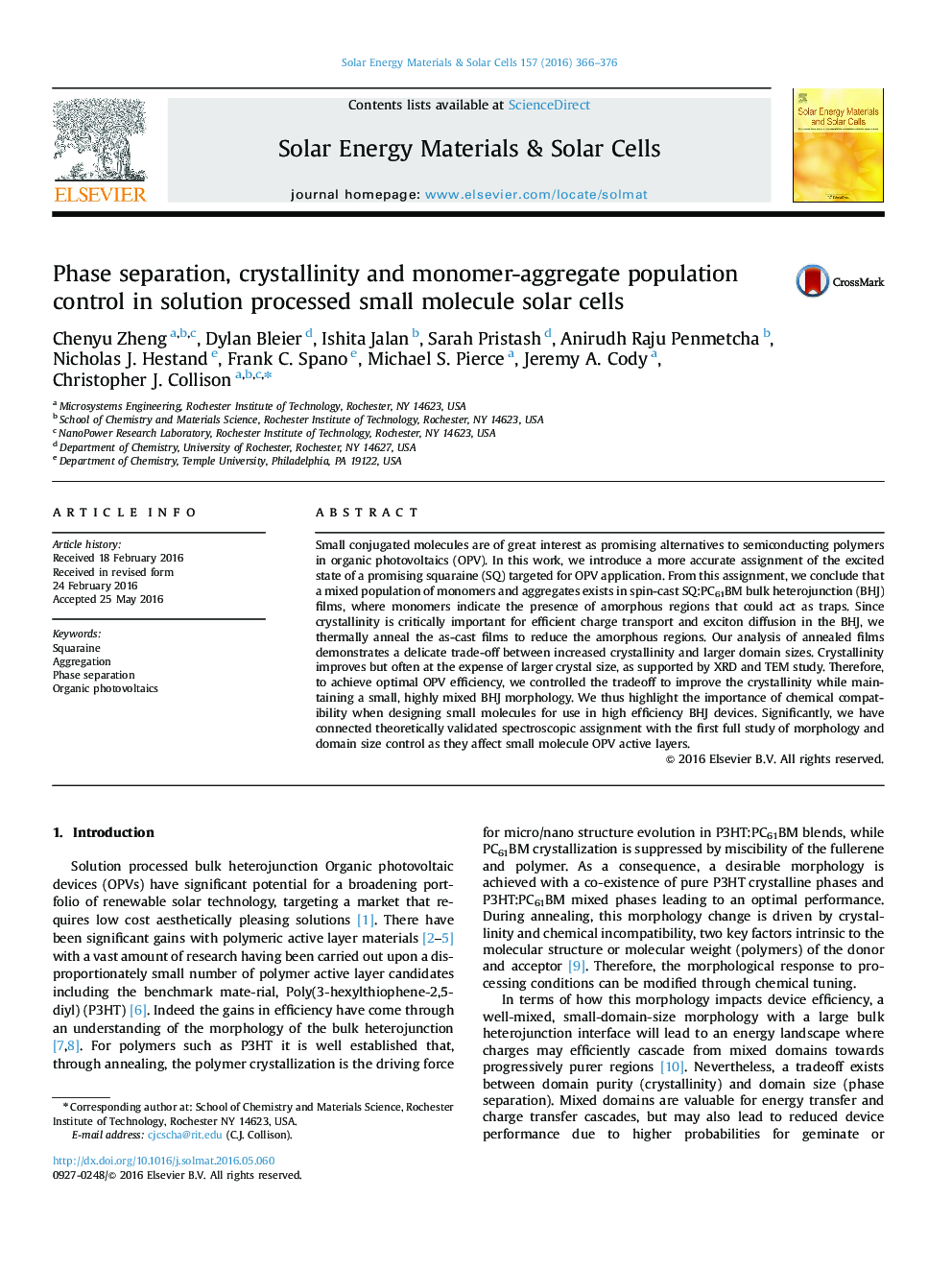| Article ID | Journal | Published Year | Pages | File Type |
|---|---|---|---|---|
| 6534594 | Solar Energy Materials and Solar Cells | 2016 | 11 Pages |
Abstract
Small conjugated molecules are of great interest as promising alternatives to semiconducting polymers in organic photovoltaics (OPV). In this work, we introduce a more accurate assignment of the excited state of a promising squaraine (SQ) targeted for OPV application. From this assignment, we conclude that a mixed population of monomers and aggregates exists in spin-cast SQ:PC61BM bulk heterojunction (BHJ) films, where monomers indicate the presence of amorphous regions that could act as traps. Since crystallinity is critically important for efficient charge transport and exciton diffusion in the BHJ, we thermally anneal the as-cast films to reduce the amorphous regions. Our analysis of annealed films demonstrates a delicate trade-off between increased crystallinity and larger domain sizes. Crystallinity improves but often at the expense of larger crystal size, as supported by XRD and TEM study. Therefore, to achieve optimal OPV efficiency, we controlled the tradeoff to improve the crystallinity while maintaining a small, highly mixed BHJ morphology. We thus highlight the importance of chemical compatibility when designing small molecules for use in high efficiency BHJ devices. Significantly, we have connected theoretically validated spectroscopic assignment with the first full study of morphology and domain size control as they affect small molecule OPV active layers.
Related Topics
Physical Sciences and Engineering
Chemical Engineering
Catalysis
Authors
Chenyu Zheng, Dylan Bleier, Ishita Jalan, Sarah Pristash, Anirudh Raju Penmetcha, Nicholas J. Hestand, Frank C. Spano, Michael S. Pierce, Jeremy A. Cody, Christopher J. Collison,
